Contributed by The Backpack Couple
Regardless of the country, it’s always a fascinating experience for us to visit UNESCO World Heritage Sites. So, while we were in Toyama Prefecture, we set our sights on the famous Shirakawa-go gassho-style village in nearby Gifu Prefecture. As we scoured the web for DIY guides, we learned that the renowned traditional Japanese houses are actually comprised of several adjacent villages spread across the borders of Gifu and Toyama, the nearest being the Ainokura and Suganuma villages within the Gokayama area of Nanto City. So, the day before New Year’s Eve, we rushed to the nearest bus station that would bring us to Gokayama.
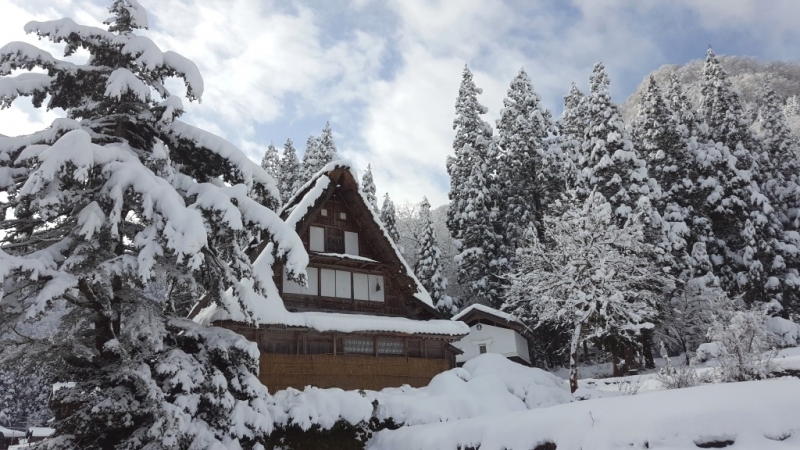
We took the World Heritage Bus from Takaoka Station and travelled almost an hour to Ainokura with a few stops along the way. We anticipated a chilly and cold day as per the weather forecast with possible snowfall. While en route to Gokayama along zigzag roads with an elevation of almost 1,000 metres above sea level, we could see that snow had been falling intensely for hours already, perhaps even since the night before. True enough, as soon as we arrived, we were treated to a real, winter wonderland.
Also read: My Winter Experience in Japan’s Gifu Prefecture
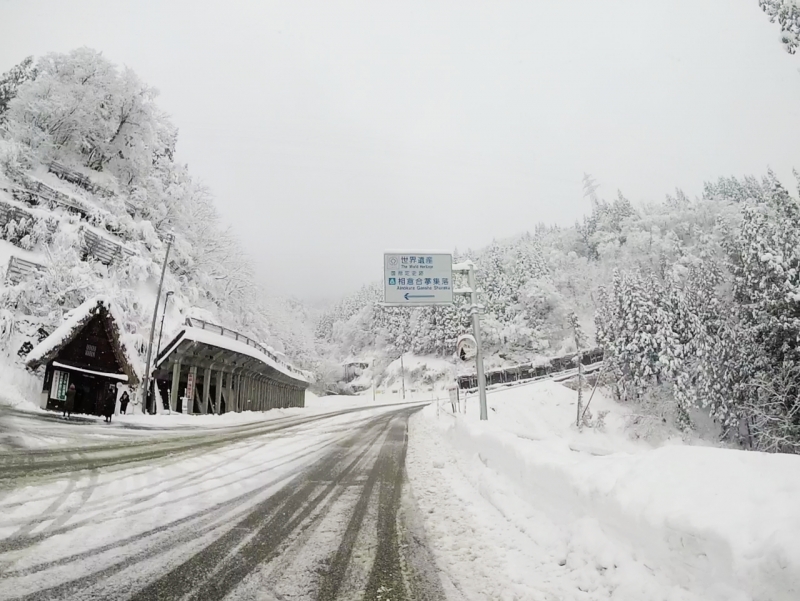
The traditional houses with thatched roofs known as “gassho-style” are quite unique to this area of the country. This architectural wonder, a traditional design precisely developed to mitigate the heavy snow fall around this area of Japan, has been recognized as a cultural icon and was inscribed as a UNESCO World Heritage Site in 1995 along with Suganuma and Shirakawa-go villages for being outstanding examples of traditional human settlements that are perfectly adapted to their environment. At Ainokura, about 23 gassho-style houses still remain in use to this day.
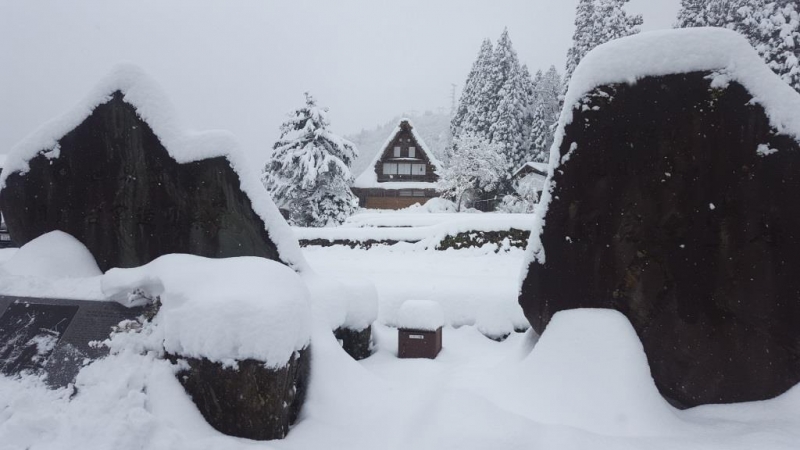
The snow-covered UNESCO inscription
Exploring the village will surely give you a surreal feel of the old and rural Japanese experience. A quick walk up the hilly portion of village brings you to a spot that perfectly captures the whole village. While the day offers a beautiful and panoramic view of the village, it is also worth witnessing the area during the night when the houses light up.
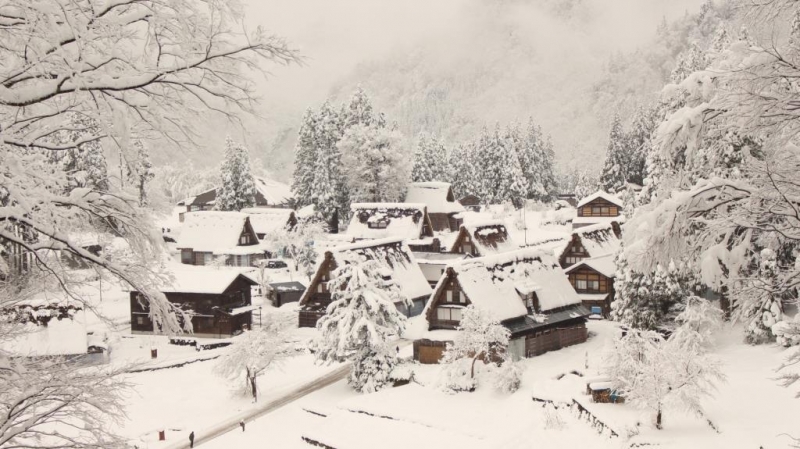
Ainokura village from the viewing point
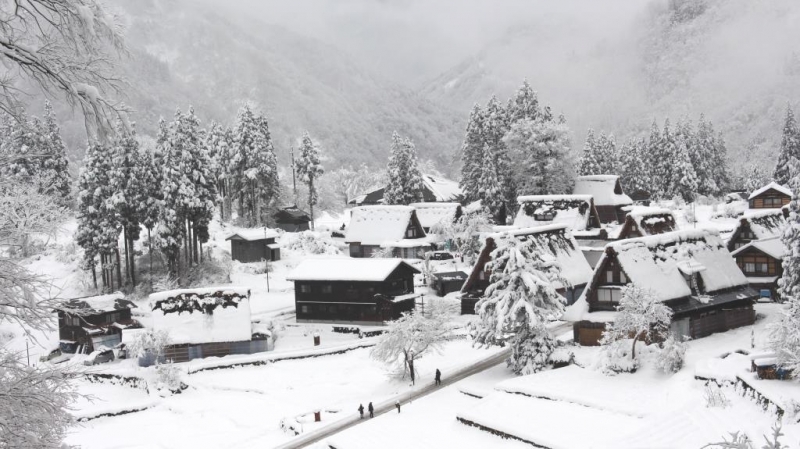
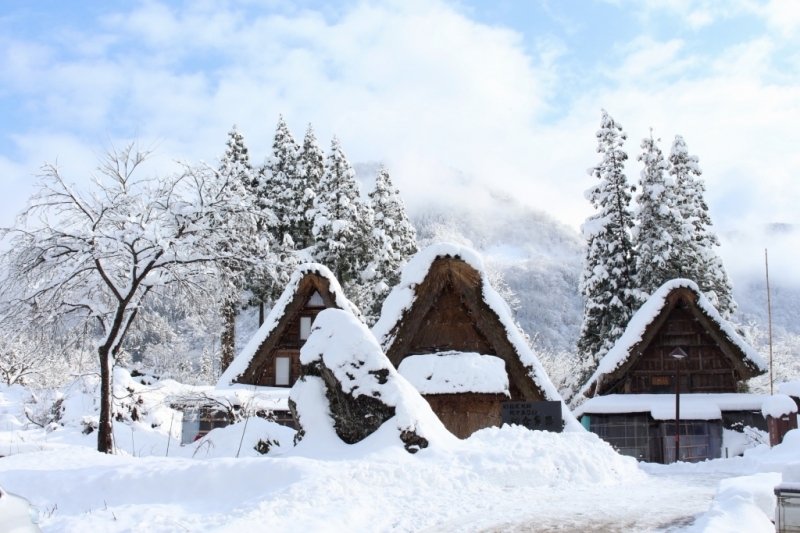
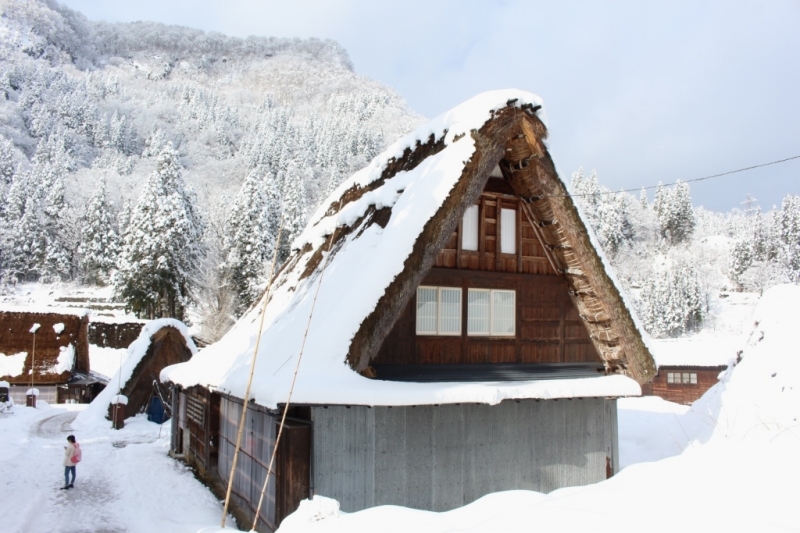
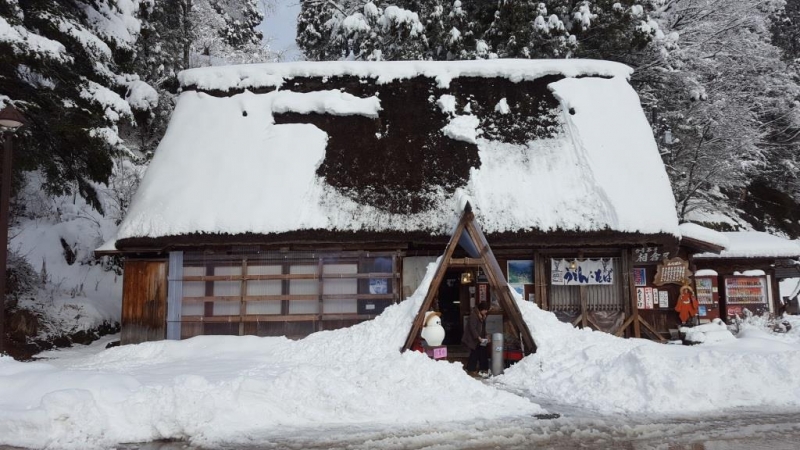
The best time to visit the village is during spring or autumn when the surroundings are filled with colours. However, if you want to experience the charming winter wonderland backdrop that we experienced, we recommend visiting the place in winter (late December to early March). Also, it’s worth a try to spend a night in one of the houses-turned-hostel to experience the authentic Japanese village way of life.
Also read: 10 Destinations in Japan to Spend Your Autumn and Winter Vacations
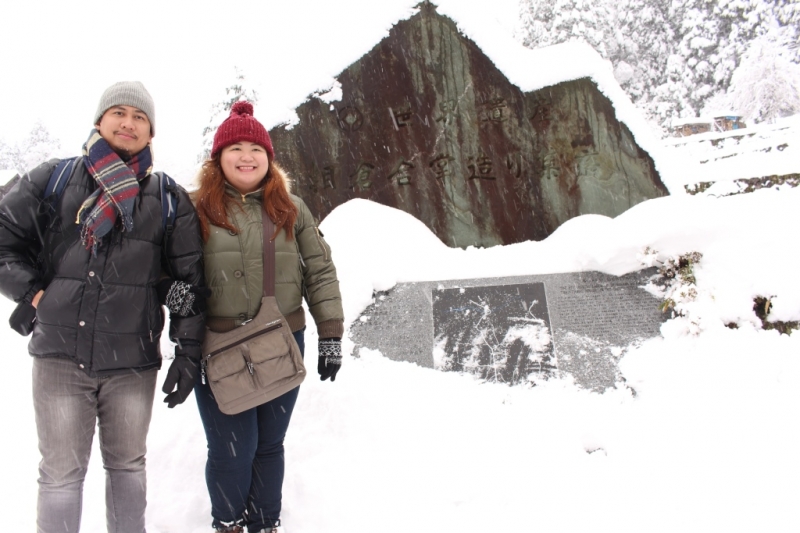
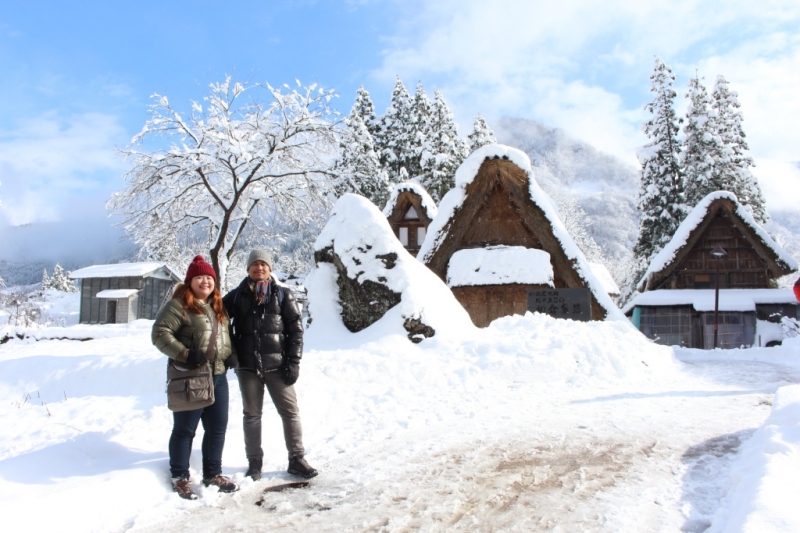
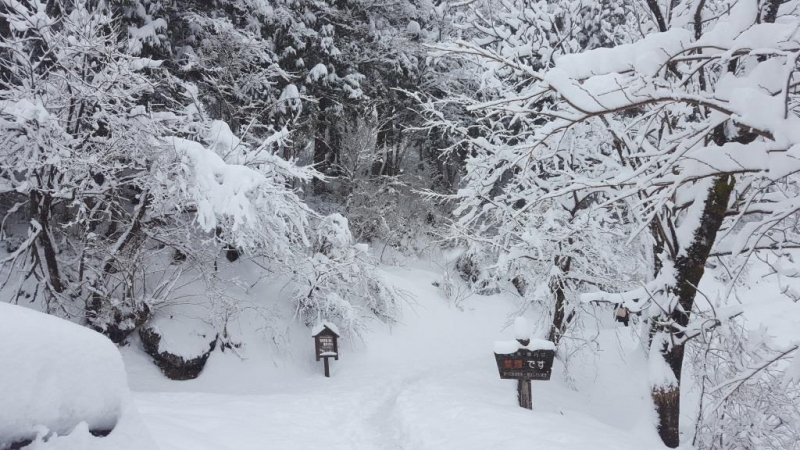
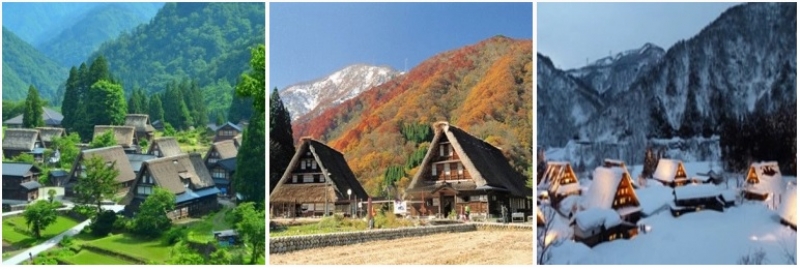
Ainokura in three seasons | Image credit: Toyama Tourism
Getting there
The best and fastest way of getting to this world heritage village is via the Hokuriku Shinkansen from Tokyo. It takes a little more than 2 hours to travel from Tokyo Station westward to Takaoka Station in Toyama Prefecture. At Shin Takaoka station, the World Heritage Bus, a dedicated bus that travels the Gokayama and Shirakawa-go villages, passes by the station to pick-up visitors. From Takaoka, travel time to Gokayama, particularly Ainokura village, is roughly about 1 hour along beautiful mountain scenery. Tickets cost JPY 1,200 one way while the hop-on hop-off pass costs JPY 2,500. It is also possible to take the train from Toyama City, Kanazawa or Takaoka via JR Johana Line going to Nanto City, but this would take some time and effort on transfers.
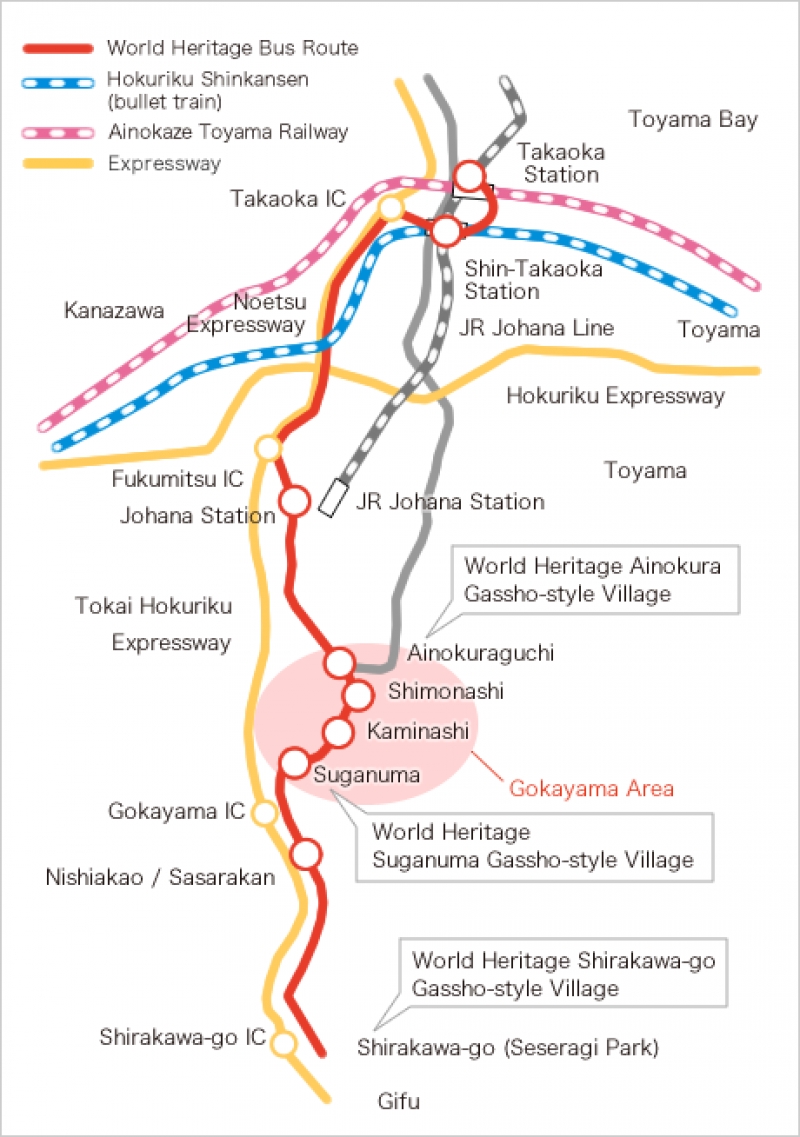
Image credit: Toyama Tourism Organization
If coming from Nagoya, the most accessible by train would be through Takayama in Gifu and onward to the Shirakawa-go village. There are buses in Shirakawa-go going to other villages of Suganuma and Ainokura.
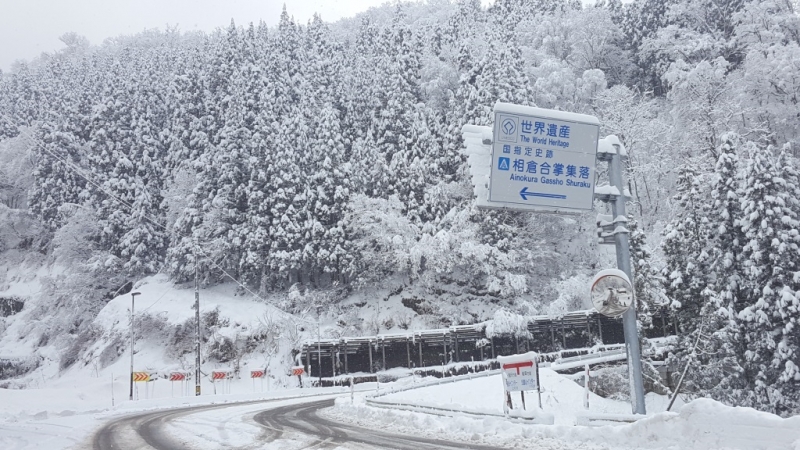
Getting around
Ainokura is just a small village and could be explored on foot. In fact, it takes just a brief walk from the highway bus stop to get to the village. If you decide to visit the next heritage village of Sagunuma, just return to the highway and wait for the passing bus. Just note of the schedules which are posted at the bus stop point.
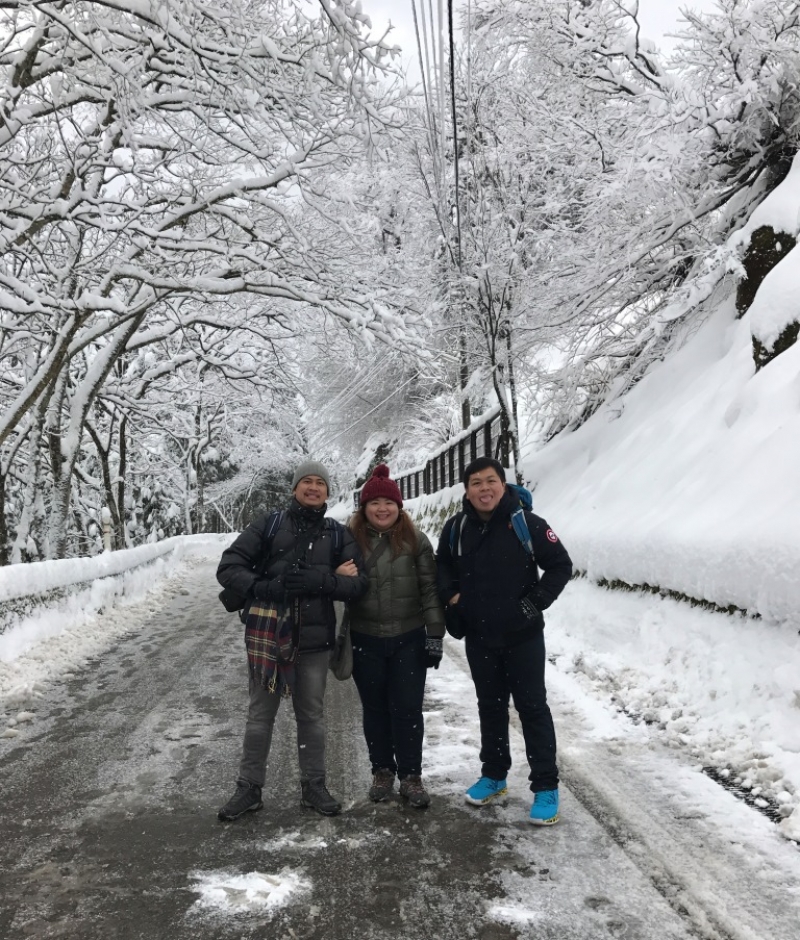
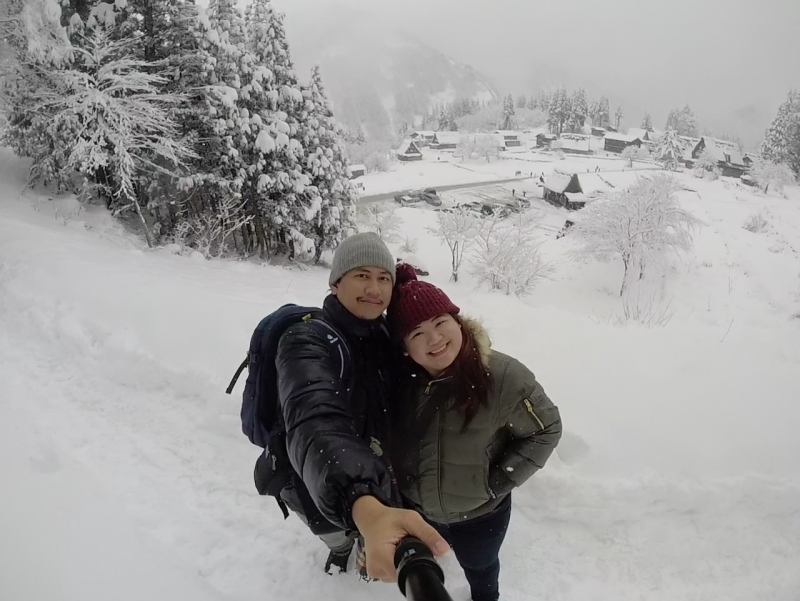
Travel notes
- There are several restaurants within the village that also sell souvenir items and other essentials. Ask for local dishes such as traditional udon and ramen to keep you warm during winter.
- It is a must to take note of the bus schedules if you are on a day trip. Trips are usually on an hourly basis but there are no night trips coming from Ainokura via the Heritage Bus, with the exception of night illumination schedules.
- Make sure to wear appropriate winter outfit, especially your shoes and gloves. These are very essential, especially during extended snowfalls.
Also read: 8 Winter Illumination Spots in Japan You Should Not Miss Again!





